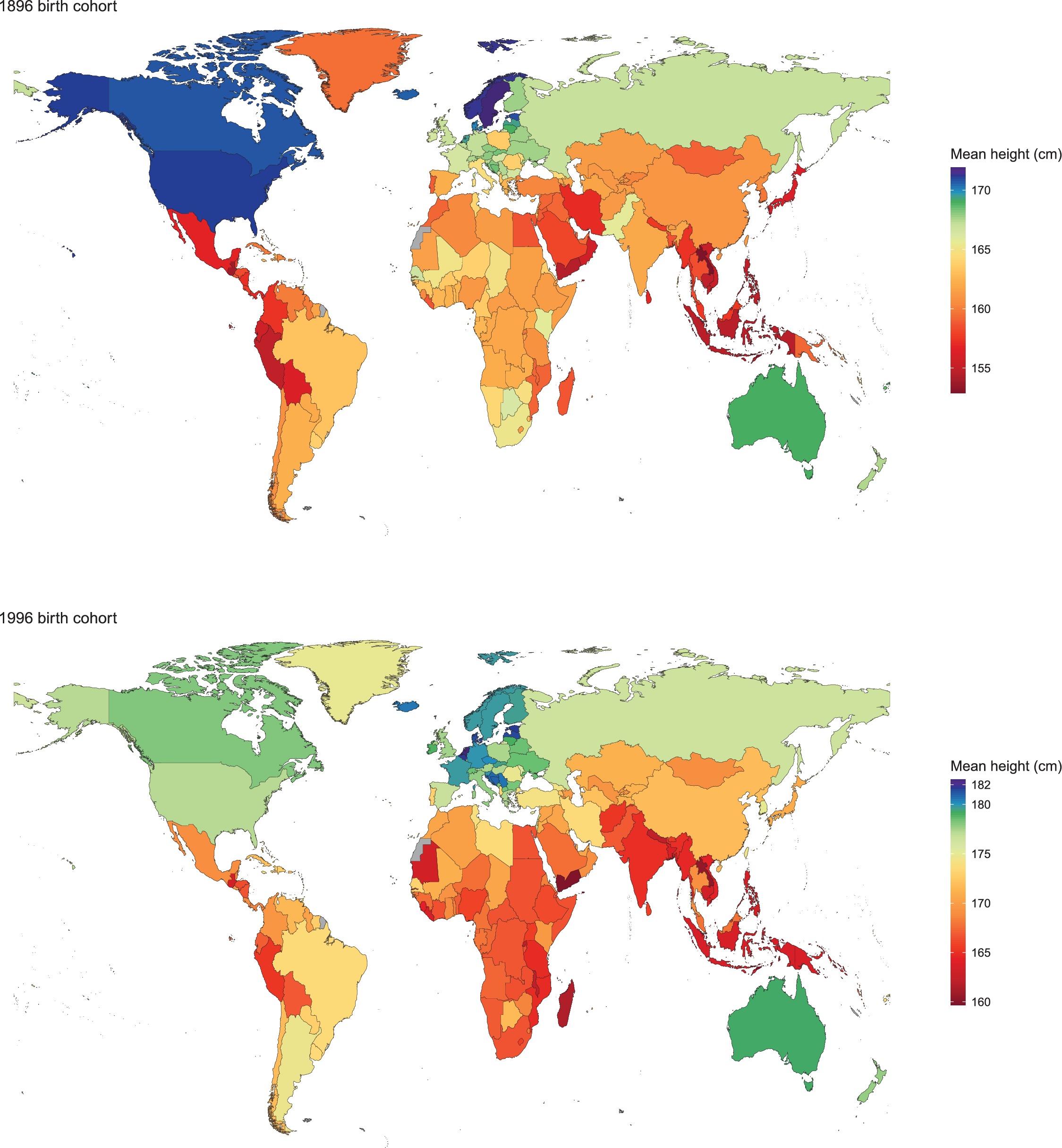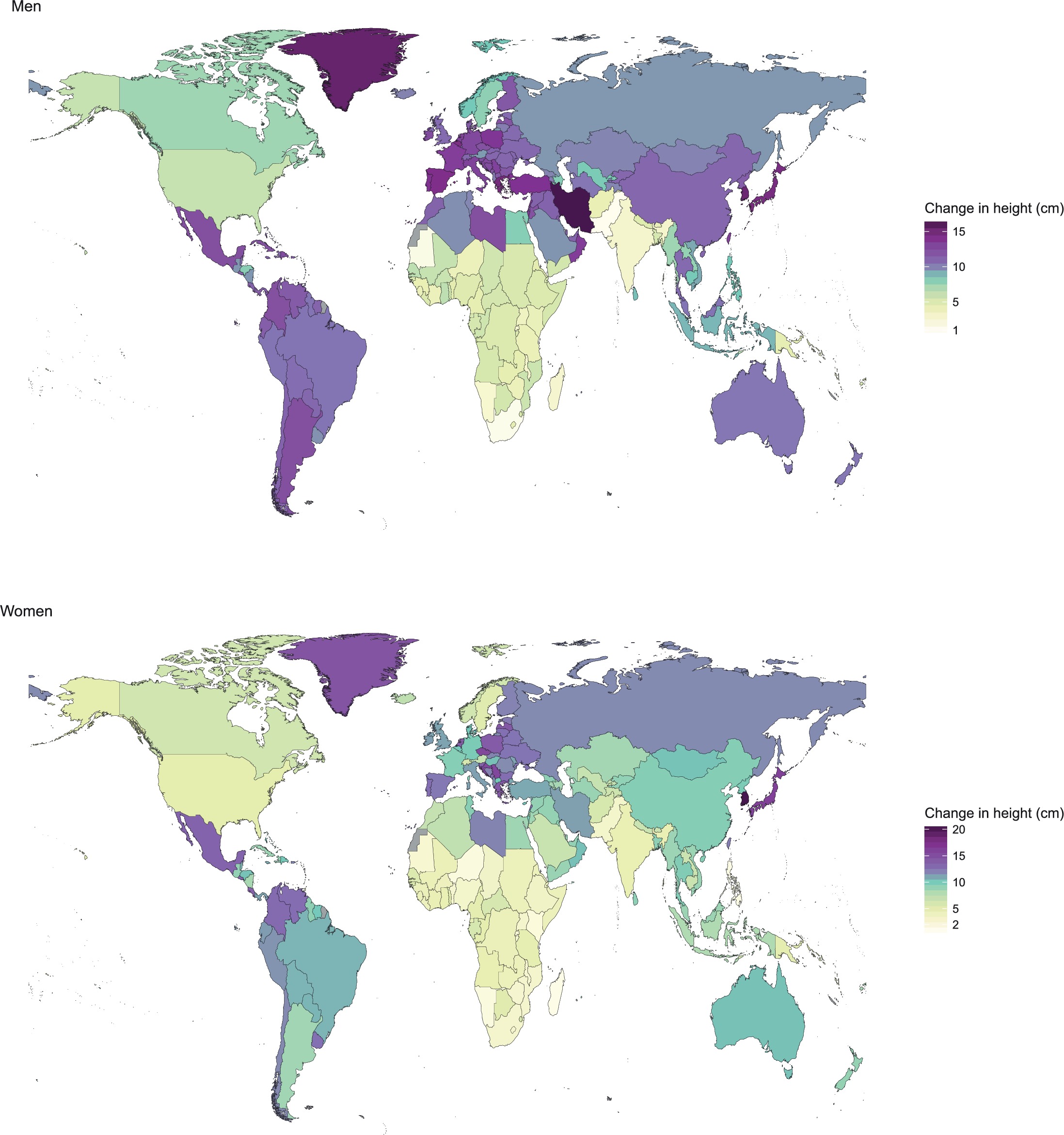
Europeans are the tallest and East Asians are growing the fastest. A new study on human height during the past 100 years have recently been published.
The height of humans are influenced in part by genetics, but even more so by the environment, in essence, diet, and health. The mother’s health and nutritional intake during pregnancy also play a role.
Tall people also generally live longer lives, have a higher degree of education and higher earnings. The height was historically highly correlated with social class in the western world.
Globalization has led to a much more mixed world today, especially the western world and this is probably also reflected in the data – as the impact of genetics is reduced in heterogeneous societies.
A new analysis of global data on men’s and women length shows that the length of the world’s population has changed in remarkable ways during the 1900s. The Europeans increased in length during the early and mid-1900s, after which growth has slowed in several countries.
In many countries in sub-Saharan Africa, people have grown, and then become shorter in recent decades.

Today’s tallest men are found in the Netherlands, 183 centimeters (6 feet) on average. The tallest woman in the world is found in Latvia, averaging a height of 170 centimeters (5 feet 7 inches).
The shortest men on the planet live on East Timor, where the average height is 160 centimeters (5 feet 3 inches).
The smallest women reside in Guatemala, a status they also held back in 1914, when the study began. Back then, they were 140 centimeters (4 feet 7 inches) – today, they are just reaching 150 centimeters (4 feet 11 inches).
The tallest populations are dominated by European nations today. Australian men being the only non-European nationality in the top 25.
The US was once home to the third and fourth tallest men and women respectively on the planet, now rank 37th and 42nd. Other countries have seen similar patterns of declining average height, including the UK, Finland, and Japan. By contrast, Spain and Italy and many countries in Latin America and East Asia are still increasing in height.

South Korean women have become 20 centimeters (7,9 inches) taller during the past 100 years.
The difference between the tallest and shortest countries in the world in 2014 was about 23 centimeters (9 inches) for men – an increase of 4 centimeters (1,6 inches) on the height gap in 1914. The height difference between the world’s tallest and shortest countries for women has remained the same across the century, at about 20 centimeters (7,9 centimeters).
The average height of young men and women has decreased by as much as 5 centimeters (1,97) in the last 40 years in some countries in Sub-Saharan Africa such as Sierra Leone, Uganda, and Rwanda.
“Our study also shows the English-speaking world, especially the USA, is falling behind other high-income nations in Europe and Asia Pacific,” lead author Professor Majid Ezzati, the Chair in Global Environmental Health at Imperial College London, said in a statement.
The nations of the tallest men in 2014 (1914 ranking in brackets):
- Netherlands (12)
- Belgium (33)
- Estonia (4)
- Latvia (13)
- Denmark (9)
- Bosnia and Herzegovina (19)
- Croatia (22)
- Serbia (30)
- Iceland (6)
- Czech Republic (24)
The nations with the tallest women in 2014 (1914 ranking in brackets):
- Latvia (28)
- Netherlands (38)
- Estonia (16)
- Czech Republic (69)
- Serbia (93)
- Slovakia (26)
- Denmark (11)
- Lithuania (41)
- Belarus (42)
- Ukraine (43)
“This study gives us a picture of the health of nations over the past century and reveals the average height of some nations may even be shrinking while others continue to grow taller. This confirms we urgently need to address children and adolescents’ environment and nutrition on a global scale and ensure we’re giving the world’s children the best possible start in life.” Professor Majid Ezzati adds.
The results are based on the length of data from 200 countries from 1914 onwards, and has been published in Elife.
_____________
A century of trends in adult human height
__________________________






















